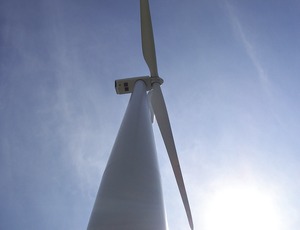It could be argued that 2013 was the year that Superstorm Sandy made state and local governments along the Eastern Seaboard take a closer look at alternative energy systems. Thousands of tristate households lost power due to the storm, a situation that some of those same households faced in major prior-year storms. Even as Congress continues deliberations over long-term tax reform, which may include certain alternative energy subsidies, analysts say that Sandy has given a significant boost to programs aimed at finding ways to make sure the lights stay on when adverse weather hits.

The following is a brief update on how some key alternative energy sectors could fare this year:
Solar
With 1,147 megawatts of installed photovoltaic capacity, New Jersey is far ahead of other states in the region, and even nationally. By year-end 2012, it ranked third in the U.S. behind sunny California and Arizona, according to the Solar Energy Industries Association. That is largely due to the state's solar renewable energy credits trading program and other state and local incentives, analysts say.
But installations dropped last year due to an ongoing oversupply in the credit trading market and an influx of cheap natural gas, says Carrie Cullen Hitt, the association's senior vice president of state affairs. By the third quarter of 2013, New Jersey fell to sixth place in the group's national ranking, but it is on track to boost capacity in place by 2025, she adds.
New York, which ranks 12th nationally with 119.4 MW, has new or planned incentives to help grow its solar power supply, Cullen says. These include the state's NY-Sun Competitive Photovoltaic Program, which recently received $30 million in funding earmarked for both solar and biogas projects.
风
风能生产商说,他们正在密切eye on the congressional debates over tax reform. At stake is the federal production tax credit, which expired last year for wind, biomass energy and other alternative power sources. It was last renewed in January 2013 with a change allowing projects that began construction that year to qualify. The American Wind Energy Association is focusing on tax reform, given that extending the credit "isn't likely to move while tax reform is active and being discussed" in Washington, says Rob Gramlich, senior vice president of public policy.
Bioenergy
The federal tax credit, state renewable portfolio standards or credits, and other incentives have helped drive growth in the bioenergy market, says Mackinnon Lawrence, a principal research analyst at Navigant Research, San Francisco. Even so, the bioenergy market is "pretty attractive" in the Northeast with many utility regulators and state governments providing incentives, he says. New York and New Jersey are major leaders in the digester, biogas and waste-to-energy sectors "because they don't have a lot of space," Lawrence says.
Like other markets, this sector is negatively affected by cheap gas prices, but Lawrence still expects growth. "Bioenergy is a growing trend nationwide," he says.
Fuel Cells
With many fuel cell manufacturing operations and several incentive programs in place, Connecticut recently became home to North America's largest operating fuel cell installation, a 14.9-MW, five-plant park in Bridgeport developed for Dominion Resources Inc.
A spokesman for FuelCell Energy Inc., which completed the installation in December, says it is the second-largest worldwide behind a 59-MW installation in South Korea. He says that U.S. investment in this market is growing, thanks in part to its reliability in all weather conditions.
That is an important factor for the region and Connecticut, in particular, which cites massive power outages from Sandy and other storms as part of its reason for ramping up renewable energy investments.
Geothermal
While the U.S. geothermal market lost some steam last year, Washington, D.C.-based trade group Geothermal Energy Association says that new technology developments will help push it forward.
Projects in the tristate region include one by developer and owner JCS Construction Group at a Greenwich, Conn., mixed-use building site. JCS received approval last year to drill 12 geothermal wells, each 500 ft deep, below the building. It is one of 60 geothermal projects in the state, according to local news reports.
As global warming issues are addressed, geothermal power's ability to replace baseload fossil fuels will fulfill state renewable portfolio standard requirements and meet federal environmental standards, said Karl Gawell, association executive director, in a statement.
Microgrid
Of the top five states with the most installed microgrid capacity, New York ranks second and Connecticut is third, says Peter Asmus, a Navigant principal research analyst.
然而,康涅狄格,成为第一个州国家nwide last year to launch a microgrid pilot program, which establishes small energy centers powered by natural-gas-powered turbines, fuel cells, solar power or other combinations of energy sources. The microgrids can be connected to the region's primary grid but can disconnect and operate independently should the main utility lose power. New Jersey recently announced a similar microgrid program, Asmus says.
According to Asmus, the best microgrid markets in the U.S. are in Washington, D.C., and in northeastern coastal cities because of the potential for "big storms." "The technology has begun to move into the mainstream," he adds.
